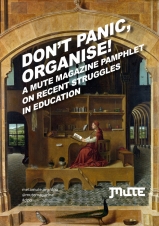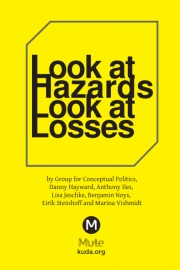Editorial
Ever heard of a ‘link farm’? This contemporary form of collective farming refers to the bogus population of platforms like MySpace by spammers trying to push their product to the top of Google’s search results. Google’s page ranking algorithm, Big Daddy, rates the popularity of a page by the number of incoming links it has from unrelated pages on the web. But the loophole is that ‘internet neighbourhoods’ are categorised into ‘good’ and ‘bad’, with sites like MySpace, Wikipedia and YouTube gaining top marks. Spammers fill these favoured sites with fake identities in order to push their wares further up the heights of Mt. Google. According to researcher Sam Vaknin, who has diligently analysed the relation between Google ranking and incoming links, links from MySpace push sites higher up the search results than do any others. Vaknin set out to discover how the invisible hand of Google gives priority to supposedly ‘authoritative’ sources such as Wikipedia whose ‘“editors” are mostly unqualified teenagers and young adults’. Like many others, Vaknin is outraged at the implicit shift of legitimacy away from traditional forms of expert knowledge production to social networking platforms. Indeed, the rise of ‘Web 2.0’ (itself a corporate logo of sorts) has precipitated a new culture war between proponents of ‘democratising’ mass amateur media and defenders of professionalism and expert research.
Outside of this self-mirroring dichotomy, however, things are more complicated. The cult of the amateur itself is suffused with notions of rights and responsibility. Unlike punk, whose DIY media ethos nihilistically shunned integration, Web 2.0 warriors can be found eulogising ‘citizen journalists’, ‘citizen videographers’ and ‘participatory citizenship’. Ultimately both pro- and anti- amateurs are defending the same thing – the conditionality of rights. The detractors believe the amateurs haven’t earned their right (to create knowledge), whereas the defenders are happy to see citizens exercising their democratic right to free speech. Both imply that with media power comes responsibility – the responsibility to engage in the production of a rational public sphere.
Web 2.0’s massification of ‘idiot proof’ media has undoubtedly produced a plethora of new perspectives and given some of those (socially and/or technologically) excluded from the old public sphere the chance to make their voices heard – or perform karaoke for a global audience. With this entry of the great unwashed onto the media stage comes the possibility of encountering what was formerly screened out of the centrally planned spectacle. Heresies, obscenities, slips, and even repressed truths – the media unconscious is breaking out on our screens. But this, often abject, ‘authenticity’ is as important for commerce as it is for the newly included. Businesses seek to grab the Web 2.0 economy by its ‘long tail’ (the economic model for sites such as Amazon or Netflix). Beyond the appropriation of freely produced content by the likes of MySpace, manufacturing the aura of the amateur remains a commercial imperative – like the lonelygirl15 saga on YouTube where film and drama school graduates created a madly popular mock video diary to get a leg-up in commercial mainstream media. Or spammers who hack the credibility of social networks – a zombie take-over of the ‘good’ net neighbourhood that is MySpace.
Web 2.0 seems to bring into starker relief the interpenetrating dynamics of chaotic social ‘noise’, relentlessly systematic search engines, and the centralising drive of commerce. Although criss-crossed with self-defined networks of relation (the trackbacks and permalinks of the blogosphere, etc.), as users we are more likely to navigate with search terms in order to mine the seams of crap and pockets of gold in the datasphere than by other means. Our relation to each other and to the unexpected is largely mediated by Big Daddy and a handful of generic templates. This issue, amongst other things, looks at whether the lashing of Web 2.0’s long tail constitutes a real challenge to the old public sphere or its hydra-like reconfiguration.
Mute Books Orders
For Mute Books distribution contact Anagram Books
contact@anagrambooks.com
For online purchases visit anagrambooks.com






